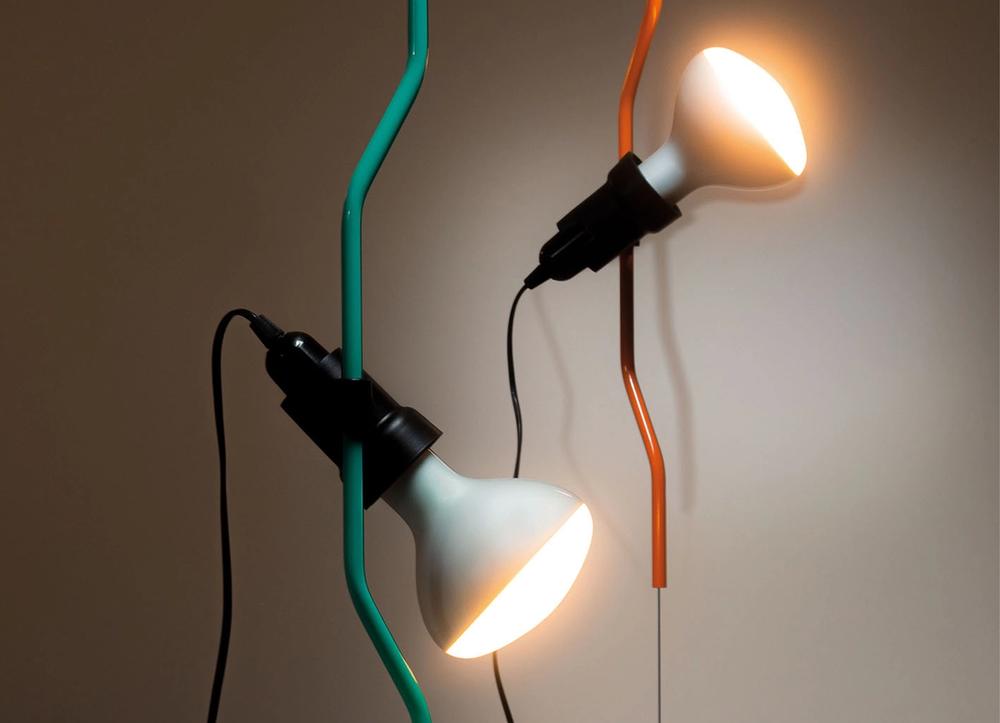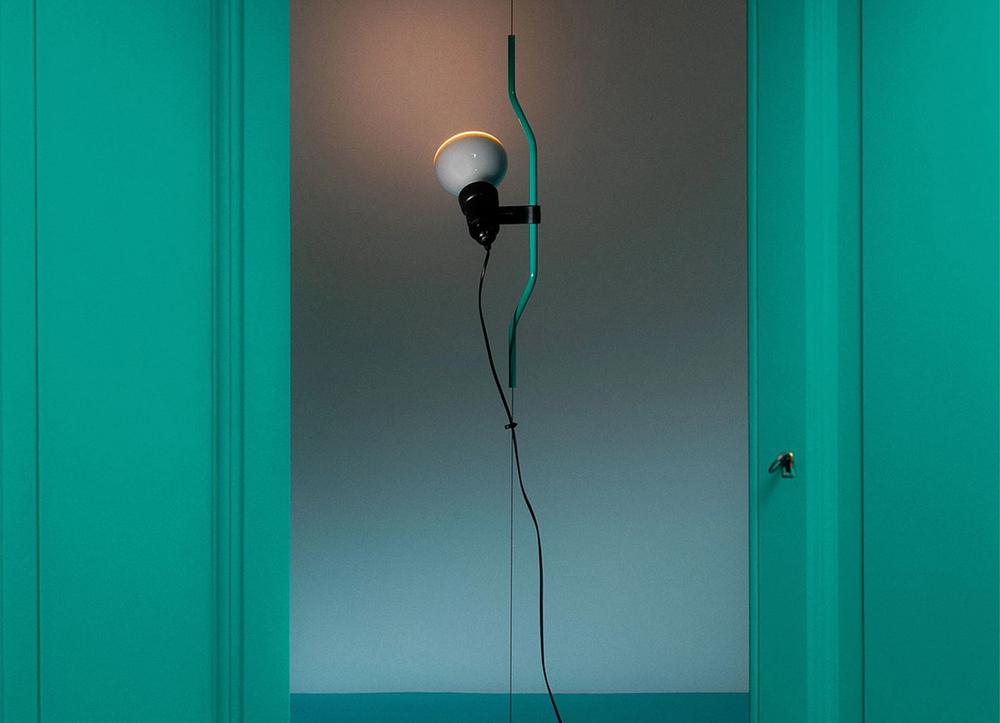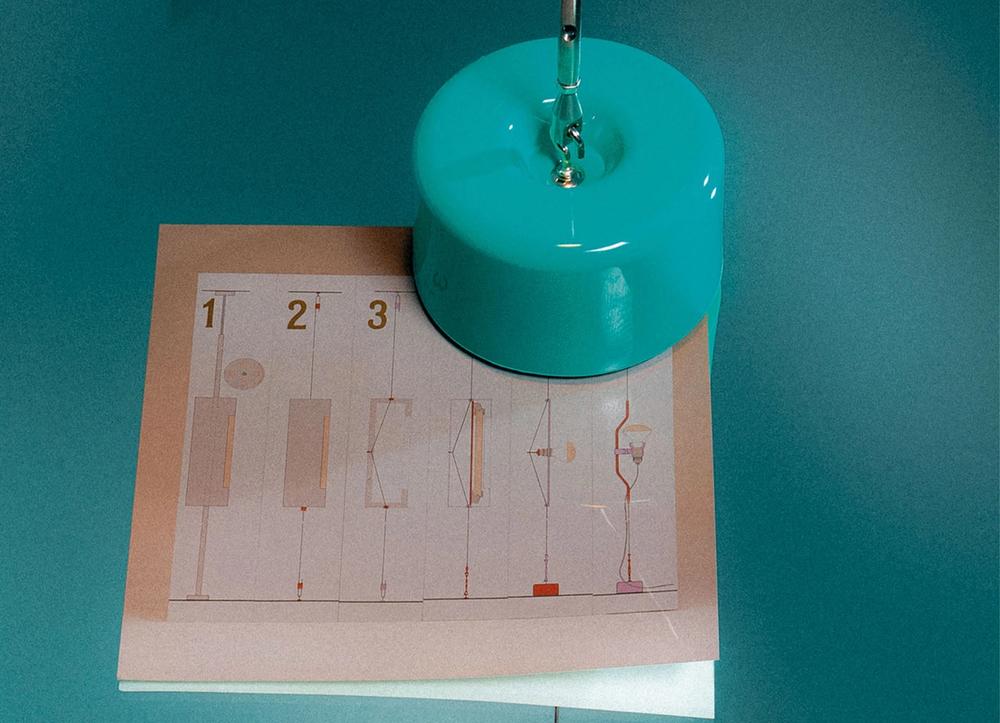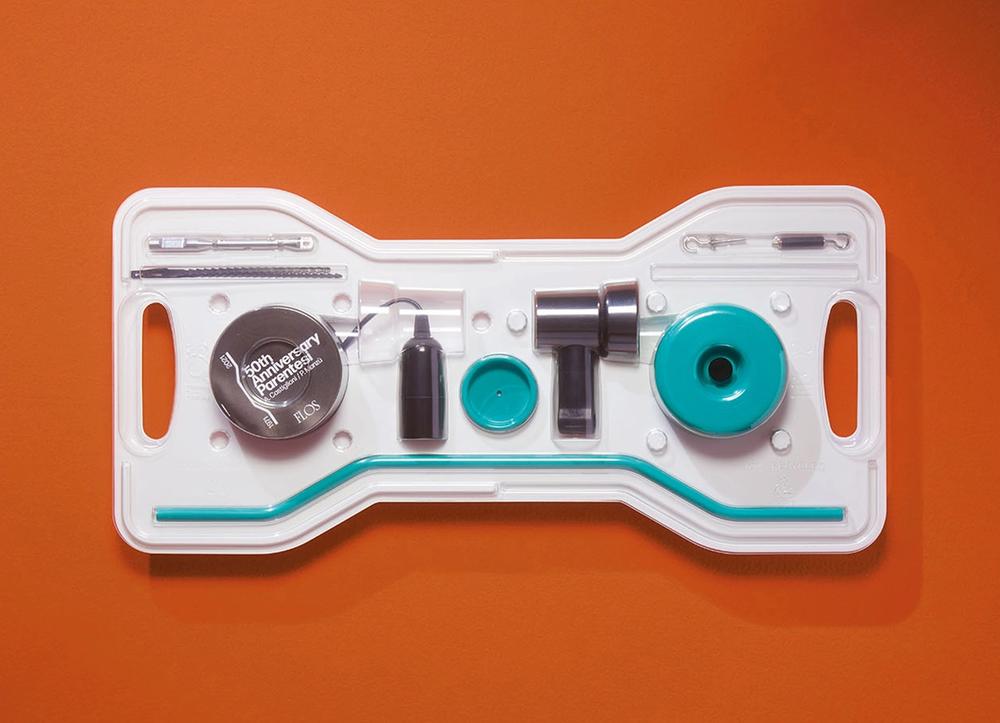How Two Italian Designers Who Never Met Created an Iconic Floor Lamp
The ingenuity of the Parentesi lamp, first released by the Italian lighting brand Flos in 1971, is most evident when it’s handled: Slide the nickel-plated tube along the steel cable to a desired position, and because of friction created by the materials, the apparatus magically stays in place. The function is the result of an unusual collaboration between two Italian giants of design, the architect and designer Achille Castiglioni and the designer Pio Manzù, the latter of whom produced several streamlined, now-iconic creations, including the Fiat 127 and Alessi’s Cronotime desk clock, before his death in 1969.
Manzù’s widow presented her late husband’s drawings to Castiglioni, and though the two designers had never met, one sketch strongly resonated with him. In it, a light-emitting cylinder, intersected by a metal rod connected to the ceiling and floor, could move up, down, and around the pole, and anchor in position with a screw. Intrigued by the concept’s potential for movement, Castiglioni set about refining it further. He replaced the rod with a metal cable, and the cylinder with a tube shaped like a parenthesis (parentesi in Italian, from which the device gets its name), and worked closely with Flos’s technicians to devise just the right amount of resistance to allow the lamp to rest anywhere on the wire. A lightbulb, attached to the bracket, can turn 360 degrees. The pared-down system—composed of just 10 parts and packaged between two transparent plastic shells made from a single mold (a nod to the technique Manzù used to make promotional cases for Fiat)—went on to win a Compasso d’Oro, a coveted award given for excellence in industrial design, in 1979.
To mark Parentesi’s 50th anniversary, Flos collaborated with Fondazione Achille Castiglioni and Fondazione Manzoni/Archive Pio Manzù to draw from both designers’ personal histories. In addition to the fixture’s existing black and red hues, there’s now Orange Signal, the color Manzù used for his prototypes, and turquoise, a favorite of Castiglioni’s, who applied it to the interiors of his home. (The new colors are currently available in Europe, and will debut stateside in November.) The 1970s-era packaging also resurfaces for the occasion, re-engineered in recycled PET plastic. Each detail respectfully continues the conversation between the creatives, adding new layers to the legacy of a design that will likely endure well past another half century.





